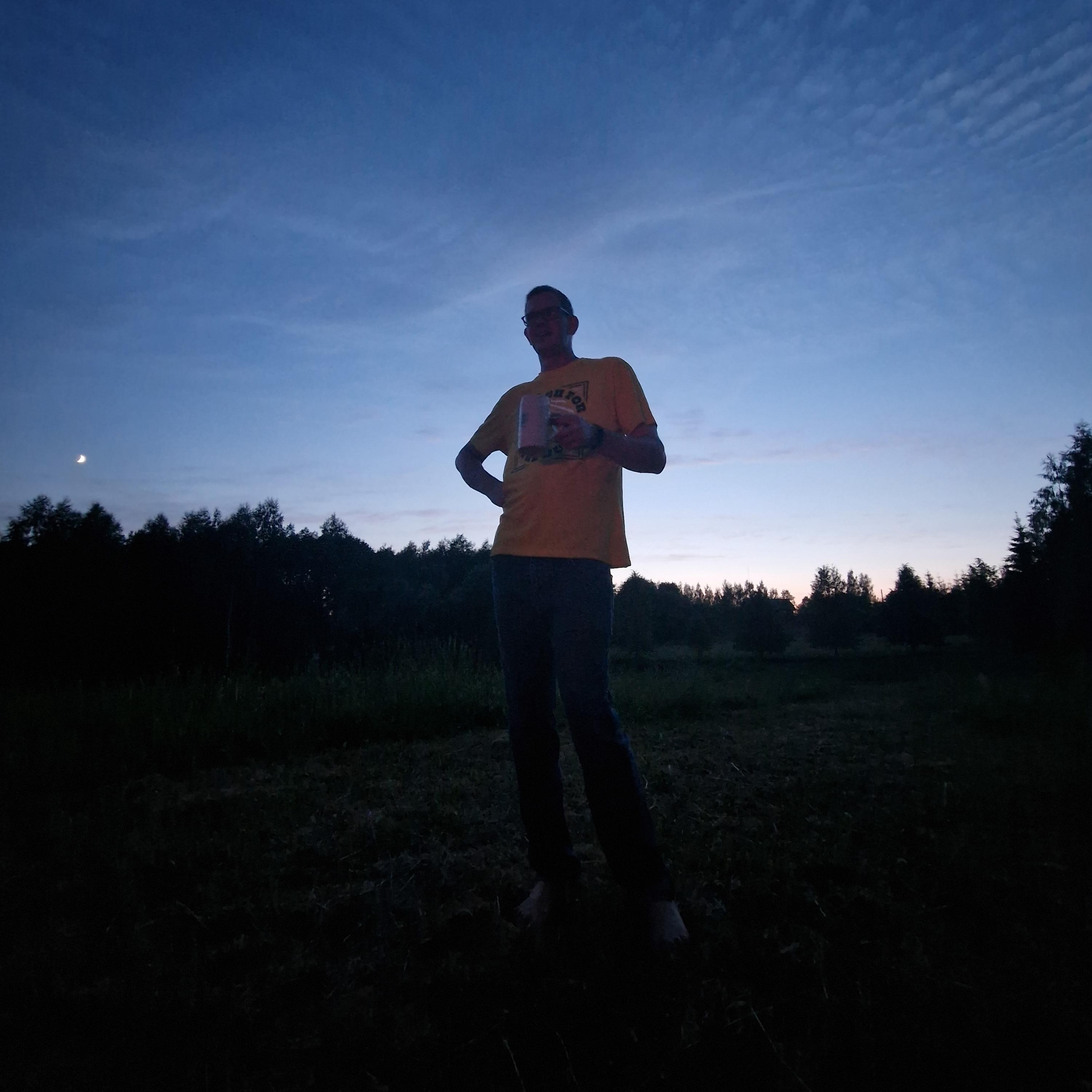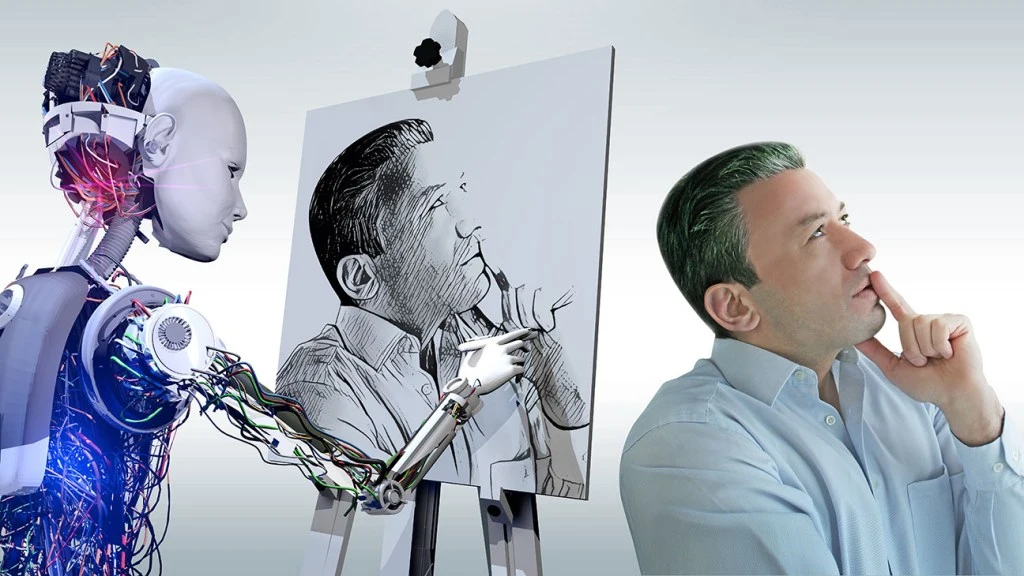More than 100 days into the writers strike, fears have kept mounting over the possibility of studios deploying generative artificial intelligence to completely pen scripts. But intellectual property law has long said that copyrights are only granted to works created by humans, and that doesn’t look like it’s changing anytime soon.
A federal judge on Friday upheld a finding from the U.S. Copyright Office that a piece of art created by AI is not open to protection. The ruling was delivered in an order turning down Stephen Thaler’s bid challenging the government’s position refusing to register works made by AI. Copyright law has “never stretched so far” to “protect works generated by new forms of technology operating absent any guiding human hand,” U.S. District Judge Beryl Howell found.
The opinion stressed, “Human authorship is a bedrock requirement.”
The push for protection of works created by AI has been spearheaded by Thaler, chief executive of neural network firm Imagination Engines. In 2018, he listed an AI system, the Creativity Machine, as the sole creator of an artwork called A Recent Entrance to Paradise, which was described as “autonomously created by a computer algorithm running on a machine.” The Copyright Office denied the application on the grounds that “the nexus between the human mind and creative expression” is a crucial element of protection.
Thaler, who listed himself as the owner of the copyright under the work-for-hire doctrine, sued in a lawsuit contesting the denial and the office’s human authorship requirement. He argued that AI should be acknowledged “as an author where it otherwise meets authorship criteria,” with any ownership vesting in the machine’s owner. His complaint argued that the office’s refusal was “arbitrary, capricious, an abuse of discretion and not in accordance with the law” in violation of the Administrative Procedure Act, which provides for judicial review of agency actions. The question presented in the suit was whether a work generated solely by a computer falls under the protection of copyright law.
“In the absence of any human involvement in the creation of the work, the clear and straightforward answer is the one given by the Register: No,” Howell wrote.
U.S. copyright law, she underscored, “protects only works of human creation” and is “designed to adapt with the times.” There’s been a consistent understanding that human creativity is “at the core of copyrightability, even as that human creativity is channeled through new tools or into new media,” the ruling stated.
While cameras generated a mechanical reproduction of a scene, she explained that it does so only after a human develops a “mental conception” of the photo, which is a product of decisions like where the subject stands, arrangements and lighting, among other choices.
“Human involvement in, and ultimate creative control over, the work at issue was key to the conclusion that the new type of work fell within the bounds of copyright,” Howell wrote.
Various courts have reached the same conclusion. In one of the leading cases on copyright authorship, Burrow-Giles Lithographic Company v. Sarony, the Supreme Court held that there was “no doubt” that protection can be extended to photographs as long as “they are representative of original intellectual conceptions of the author.” The justices exclusively referred to such authors as human, describing them as a class of “persons” and a copyright as the “right of a man to the production of his own genius or intellect.”
In another case, the a federal appeals court said that a photo captured by a monkey can’t be granted a copyright since animals don’t qualify for protection, though the suit was decided on other grounds. Howell cited the ruling in her decision. “Plaintiff can point to no case in which a court has recognized copyright in a work originating with a non-human,” the order, which granted summary judgment in favor of the copyright office, stated.
The judge also explored the purpose of copyright law, which she said is to encourage “human individuals to engage in” creation. Copyrights and patents, she said, were conceived as “forms of property that the government was established to protect, and it was understood that recognizing exclusive rights in that property would further the public good by incentivizing individuals to create and invent.” The ruling continued, “The act of human creation—and how to best encourage human individuals to engage in that creation, and thereby promote science and the useful arts—was thus central to American copyright from its very inception.” Copyright law wasn’t designed to reach non-human actors, Howell said.
The order was delivered as courts weigh the legality of AI companies training their systems on copyrighted works. The suits, filed by artists and artists in California federal court, allege copyright infringement and could result in the firms having to destroy their large language models.
In March, the copyright office affirmed that most works generated by AI aren’t copyrightable but clarified that AI-assisted materials qualify for protection in certain instances. An application for a work created with the help of AI can support a copyright claim if a human “selected or arranged” it in a “sufficiently creative way that the resulting work constitutes an original work of authorship,” it said.



So if I use a hammer to create art I can’t protect it because I used a hammer? Exchange hammer for AI
From my reading it was more like if you created art with a hammer the copyright doesn’t automatically go to the hammer which would then transfer to you via the “work for hire” clause. So if you then say lent out that hammer to a bunch of other artists to make art with you would theoretically have a copyright claim to everything they made using your hammer.
Only if it is some sort auto-magic hammer that you can give a description of what you want, but the hammer actually decides what the final piece of art looks like and produces it on the medium without you needing to make the strikes.
Now if you took the output of that auto-magic hammer and than significantly reworked it to meet your vision, that derivative output would be copyrightable.
Giving a description of what you want doesn’t count as producing it is what this seems to be saying. Which is not in favor of people who just want to plug random things into a black box to use that black box as a cash machine.
This also means that the person who owns the black box can’t steal ownership of your output by merely being the owner of the black box. This would be equivalent to you leasing a printer and the company you’re leasing it from saying they own anything you print.
So good ruling. You can copyright the output if YOU rework the output, but you can’t copyright the direct output.
Way I see it a hammer is a tool, like a paintbrush or a camera or Photoshop or chatGPT.
If you use the hammer to break a plate and call it art, you get the copyright.
If you set the hammer up on a machine and feed it a million plates to smash, but with your direction and intent - to choose the types of plates, speed of the hammer, to use the tools to output different results - its still art and you still get the copyright.
But if your hammer sits inside a Platesmasher 9000 which randomly takes plates as input, selects which plates to smash, smashes them, assesses the results, smashes more, then outputs a perfect smashed plate without you doing anything - that’s not copyright able. You can’t sya you deserve the copyright, as you did not meaningfully contribute to the work - the Platesmasher did everything. You cant point to the output of the system and say “the system made that and deserves copyright” because it’s just an algorithm, it doesn’t know or have intent behind what it’s doing, and can’t be assigned a right.
What this does is stop corporations from building a million Platesmashers and claiming copyright on a billion versions of smashed plates - human intervention is required as part of the creative process to use the tools in order for there be a right in the first place.
Maybe you could get an AI to write a better argument. The hammer doesn’t steal others work to make its own.
You could train a LLM using only your own art, and then generate art that is based solely on your own. Do you not own that AI generated art?
The way I understand it if you did that and tried to take just the raw AI output and get a copyright on it you couldn’t based on this ruling. But if it was one of the tools you used to create a piece of art even if it was just editing and making small changes to it to suit your creative vision based on what the AI put out then you could. It sounds like the judge is mainly talking about works solely generated by AI.
Also my understanding was that this guy was trying to get the AI generator itself to be considered the author for the things it generated for the purposes of copyright. Which would theoretically transfer to whatever entity is running the AI because of the “Work for Hire” clause.
Did you steal other’s work to learn how to write that sentence?
It’s a good thing they weren’t making an argument then - but asking a (flawed) question. Just like comparing machine learning to stealing is a flawed comparison.
None of you AI boosters can make a coherent and cogent argument in good faith. Why is that?
It’s a bit of a flawed comparison (AI vs a hammer) - but let me try.
If you put a single nail into wood with a hammer, which anyone with a hammer can also do, and even a hammer swinging machine could do without human input, you can’t protect it.
If you put nails into wood with the hammer so that it shows a face, you can protect it. But you would still not be protecting the process of the single nail (even though the nail face is made up of repeating that process many times), you would specifically be protecting the identity of the face made of nails as your human artistic expression.
To bring it back to AI, if the AI can do it without sufficient input from a human author (eg. only a simple prompt, no post processing, no compositing, etc) it’s likely not going to be protectable, since anyone can take the same AI model, use the same prompt, and get the same or very similar result as you did (which would be the equivalent of putting a single nail into the wood).
Take the output, modify it, refine it, composite it, and you’re creating the hammer equivalent of a nail face. The end result was only possible because of your human input, and that means it can be protected.